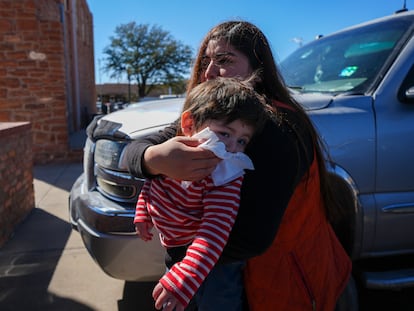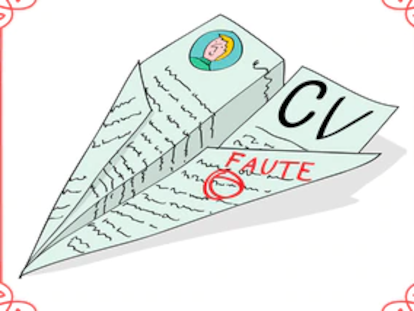Tuberculosis cases on the rise in the US: How to protect yourself and everything you need to know
Currently, several states have outbreaks. In Kansas City, where cases have increased 148%, two deaths have been reported

It‘s not just measles. Cases of another disease are on the rise in the United States. An analysis of tuberculosis (TB) incidences in the U.S. published by the Centers for Disease Control and Prevention (CDC) in 2024 found that, after nearly three decades of a decline, since 2021 they have been rising.
Among the causes are increased travel after the pandemic, sanitation problems linked to Covid, and outbreaks in several states. Similarly, the country suffered from a shortage of TB drugs between 2021 and 2023. In 2024, 10,347 TB cases were reported, representing an 8% increase over the previous year and the highest level in 12 years.
The study also found that TB may affect some groups more than others. Most of the cases in 2024 were among people not born in the United States, particularly Latinos. The largest number were reported in California (2,100).
However, the numbers remain relatively low, with only about 10 people in 100,000 having been infected with TB.
Current outbreaks
Recent reports mention that there are currently outbreaks in several states. In Kansas City, there has been a 148% increase and two deaths have been reported. The origin of the outbreak is unknown at this time. The other states with the highest number of cases are Alaska and Hawaii.
Similar to the current measles outbreak, health authorities fear that cases may increase in large cities. A few weeks ago, one case was confirmed in a Florida school, Dillard High School in Fort Lauderdale. As part of the response, individuals who had been in close contact with the person were identified and notified, and TB testing began. Within days, a case was found in a prisoner at a federal detention center in Miami. Last year, 700 cases of tuberculosis were reported in the state.
Although at the moment the outbreaks are not as significant as those of measles (another disease whose cases have grown after a decline in previous years), the increase is of concern, particularly due to the crisis currently suffered by the Department of Health under its leader Robert F. Kennedy Jr., who has maintained an anti-vaccine position (although he recently recommended its use to prevent measles).
What is tuberculosis?
According to the CDC, tuberculosis is a disease caused by the bacterium or microbe mycobacterium tuberculosis, which causes the majority of cases in the United States.
The disease usually affects the lungs, and depending on how it acts, it can cause negative effects in other parts of the body such as the brain, kidneys or spine, or several at the same time. If a person does not receive adequate treatment, tuberculosis can be fatal. In fact, it is the most deadly infectious disease worldwide.
An important fact is that not all people who have been infected with TB show symptoms. Because of this, there are two types of the disease: inactive tuberculosis (also called latent tuberculosis infection) and active tuberculosis.
A person with inactive TB cannot spread the disease to others; however, if not properly treated, he or she may develop active TB and develop symptoms. The CDC estimates that as many as 13 million people in the United States are living with inactive TB.
According to Karen Dobos and Marcela Henao-Tamayo, microbiology experts at Colorado State University, half of all people with untreated active TB die from the disease, while treatment reduces the death rate to 12%.
Tuberculosis is transmitted through tiny infectious droplets in the air, which can be emitted through coughing, singing, or breathing while sleeping or resting. However, it does not spread as rapidly as Covid, and it would require spending a lot of time with the infected person to become infected.
Symptoms of active tuberculosis
The CDC lists the following as some of the most common symptoms of active TB disease:
- Chest pain
- Fatigue
- Weight loss
- Loss of appetite
- Fever
- Chills
- Night sweats
- Cough for three weeks or more
There are several antibiotic-based treatments for active TB that can last from four to nine months. People with other medical conditions such as diabetes or HIV may require special treatment.
Is there a TB vaccine?
The Bacillus Calmette-Guérin (BCG) vaccine is used for children in countries where TB is common. However, it is not generally recommended in the United States because of the low risk of infection, potential interference with TB tests, and because its effectiveness may vary in adults.
How to take care of yourself?
Treating inactive TB is key, especially in people with weakened immune systems, because without treatment it can progress to active disease, which is contagious and potentially fatal. People with active TB should strictly follow medical treatment, avoid close contact with others, cover coughs and stay in ventilated spaces. Healthcare settings should implement infection control plans. In addition, it is crucial to complete all treatment to avoid the emergence of drug-resistant TB.
The risk of infection increases in enclosed spaces and in people frequently exposed to high-risk environments, such as hospitals, prisons, or high-prevalence countries.
Sign up for our weekly newsletter to get more English-language news coverage from EL PAÍS USA Edition
Tu suscripción se está usando en otro dispositivo
¿Quieres añadir otro usuario a tu suscripción?
Si continúas leyendo en este dispositivo, no se podrá leer en el otro.
FlechaTu suscripción se está usando en otro dispositivo y solo puedes acceder a EL PAÍS desde un dispositivo a la vez.
Si quieres compartir tu cuenta, cambia tu suscripción a la modalidad Premium, así podrás añadir otro usuario. Cada uno accederá con su propia cuenta de email, lo que os permitirá personalizar vuestra experiencia en EL PAÍS.
¿Tienes una suscripción de empresa? Accede aquí para contratar más cuentas.
En el caso de no saber quién está usando tu cuenta, te recomendamos cambiar tu contraseña aquí.
Si decides continuar compartiendo tu cuenta, este mensaje se mostrará en tu dispositivo y en el de la otra persona que está usando tu cuenta de forma indefinida, afectando a tu experiencia de lectura. Puedes consultar aquí los términos y condiciones de la suscripción digital.
More information
Archived In
Últimas noticias
A survivor’s account of the Interoceanic Train accident: ‘We were scared because of the speed on the curve’
The Interoceanic Train, the Mexican alternative to the Panama Canal
What is known about the Interoceanic Train derailment in Oaxaca
Trump turns a Minnesota fraud allegation into ammunition for his MAGA army against Democrats
Most viewed
- Oona Chaplin: ‘I told James Cameron that I was living in a treehouse and starting a permaculture project with a friend’
- Reinhard Genzel, Nobel laureate in physics: ‘One-minute videos will never give you the truth’
- Why the price of coffee has skyrocketed: from Brazilian plantations to specialty coffee houses
- Pablo Escobar’s hippos: A serious environmental problem, 40 years on
- Chevy Chase, the beloved comedian who was a monster off camera: ‘Not everyone hated him, just the people who’ve worked with him’











































